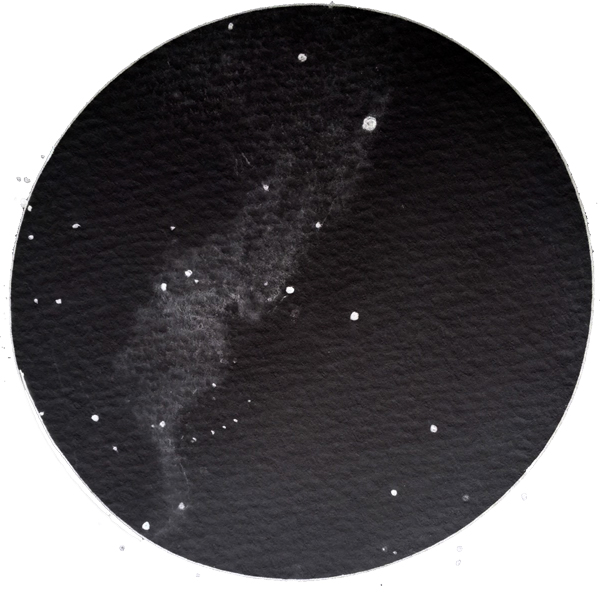About the Deep-Sky Challenge
 The DSC observing program, compiled by Alan Dyer and Alister Ling in 2001, goes beyond the Messier Catalogue and the Finest NGC objects, and there is no overlap. The observing program features "fringe" deep-sky treasures that are somewhat more challenging objects than what most observers look for. The attraction of observing is not the sight of an object itself but the intellectual contact with what it is. (Drawing of B33 Horsehead Nebula by Ted Wang.)
The DSC observing program, compiled by Alan Dyer and Alister Ling in 2001, goes beyond the Messier Catalogue and the Finest NGC objects, and there is no overlap. The observing program features "fringe" deep-sky treasures that are somewhat more challenging objects than what most observers look for. The attraction of observing is not the sight of an object itself but the intellectual contact with what it is. (Drawing of B33 Horsehead Nebula by Ted Wang.)
Here is an overview of the DSC Observing List:
| Deep-Sky Challenge Objects | Number | Notes |
|---|---|---|
| Open Clusters | 2 | NGC 609 in Cassiopeia and NGC 6791 in Lyra. |
| Globular Clusters | 4 | Includes Palomar 11 in Aquila. |
| Emission/Reflection Nebulae | 13 | Includes California Nebula in Perseus and Barnard's Loop in Orion. |
| Dark Nebulae | 2 | Includes B33, the Horsehead, and B72, the Snake. |
| Planetary Nebulae | 8 | Includes Jones 1 in Pegasus. |
| Supernova Remnants | 1 | |
| Galaxies / Galaxy Clusters / Quasars | 15 | |
| Total | 45 |
RASC Deep-Sky Challenge Certificate
Observing the DSC list is an excellent project for those who have completed their Finest NGC and/or Messier Certificate and who are looking for a challenging observing program. The official list can be found in the RASC Observer's Handbook. At least a 30-cm (12-inch) telescope is recommended to complete most of the list, although it can be accomplished with a 25-cm (10-inch) under good skies. A few of the objects will require access to a large telescope (50-cm / 20-inch). Several DSC objects can be observed in even smaller instruments, so these could be used to get started on the brighter objects. With all instruments, a nebular filter will be necessary to see the often visually faint glowing clouds of gas and dust of some objects.
In the case of galaxy clusters, try to identify as many individual galaxies as you can, but also look for the collective background glow of the others at the edge of perception.
The DSC observing program can be started during any season. RASC members only may apply for a certificate.
Use the generic application form (PDF, 185 KB) for this visual certificate application. The form has a language of choice option for the Certificate. Indicate your home affiliated RASC centre or "National" or "Unattached" if not associated with a specific centre.
Do not email large files or multiple files to the Observing Committee chair. Ask about our new Uploader Service!
This Observing Program is designed to be an INDIVIDUAL EFFORT. When you complete the program and apply for your certificate, you will have met these requirements: you located the object yourself, made your own observation at the eyepiece, kept your own log book or pre-programmed observing forms, and then applied for your certificate on your own merit. Enjoy your journey through this program!
Contact the Observing Committee chair: observing AT rasc.ca
Resources
Here are some recommended resources to help you tackle the DSC Certificate program:
- Uranometria - by Wil Tiron is adequate for most objects
- Tri-Atlas - by Jose Torres and Casey Skelton, free downloadable PDF charts contain all objects.
- Earth Centered Universe - by Dave Lane — useful PC Software.
- The Night Sky Observer's Guide (Volumes One and Two) - by George Robert Kepple and Glen W. Sanner contains descriptions and finder charts for many of the objects on the DSC list.
